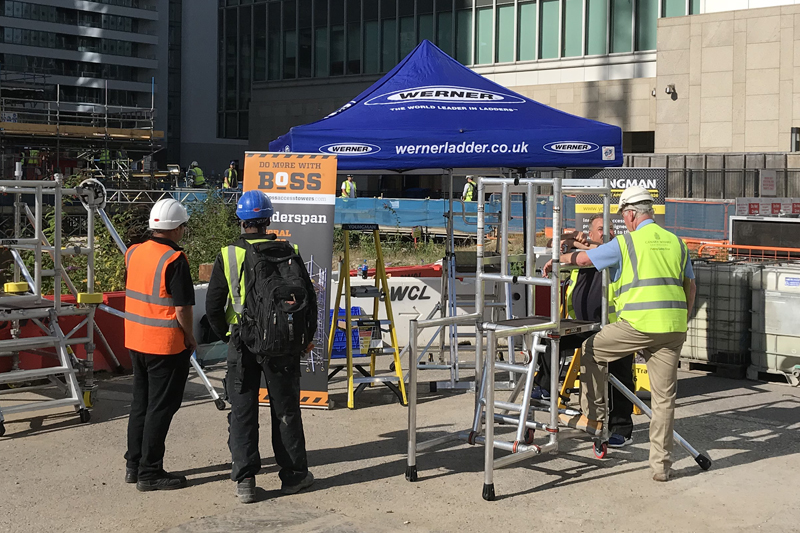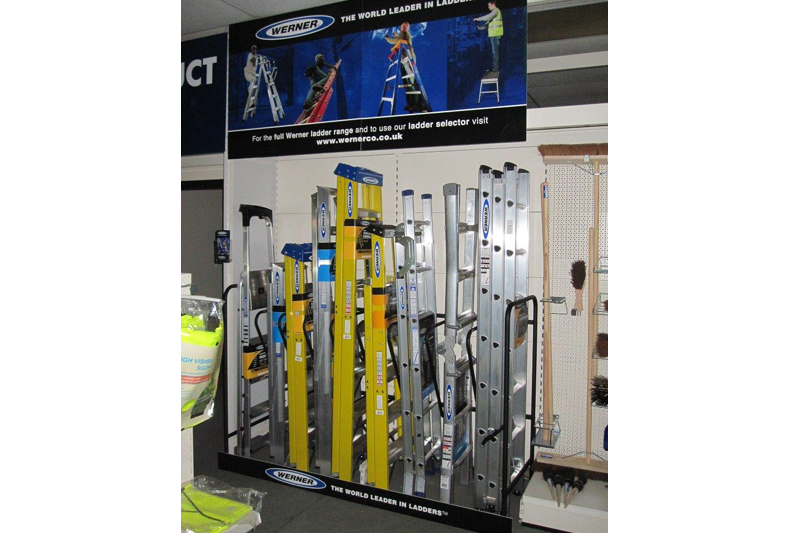
In 2021, the Health and Safety Executive (HSE) revealed that falls from height continued to be the leading cause of workplace fatalities in the UK, accounting for 25% of all worker deaths. Trevor Rabson, Training Manager at WernerCo, discusses how best practice training for merchants can not only boost sales but also support customers staying safe when working at height.
Working at height is unavoidable in many industries, so it’s vital for professionals to use the correct access equipment and be aware of safe practices when on site. Merchants are in a prime position to promote this by stocking suitable products and educating customers about the training options available.
Knowledge is king
Merchants are often the source that professionals will turn to for trusted guidance, so having employees that are able to recommend the most suitable solution for the job is a real plus. Being clued up on the different products you stock and able to offer advice around them is key.
And when selling safety critical equipment such as ladders, merchants have the opportunity to inform customers of best practice when working at height. This is also the perfect time to remind them about the importance of training and the options available.
Being able to offer enhanced expertise helps counter staff to build strong and positive relationships with customers and, when it comes to supporting them to choose the right equipment for the job, it could have a positive impact on sales.
However, knowing where to start with training advice can be daunting and that is why WernerCo is proud to offer free of charge training to merchants and staff. This includes a wide range of on-site training to customers and end users across the industry, including ladder, tower and equipment inspections, in addition to advice and best practice while using WernerCo products.
It pays to display
Educating customers is one thing, but making sure that you have the products you’re talking about on display can often be tricky when you have many different suppliers all vying for space.
Furthermore, larger items such as ladders can be hard to display on the shop floor and are often “hidden away in the back”, especially when space is restricted. However, this is when key sales opportunities can be missed as once products are out of sight, they are often out of mind.
On average, a tradesman owns at least five sets of ladders and when it comes to working at height safely, it isn’t a case of one fits all. With this in mind, Tactical Display Units (TDU) and good Point of Sale displays (POS) are vital when it comes to boosting sales (see pic below).
Providing safe storage of products, TDUs are able to showcase a variety of products within one display. Also, high-quality POS can boost order numbers when used correctly, and variety is key. The TDUs are compact in size and, size dependent can allow up to five products to be displayed. The Werner or Youngman branded units are 1m wide and designed to be positioned at gondola ends or for neat positioning around the counter. They can even be displayed outside the main entrance.
The TDUs can hold a range of products allowing merchants to offer popular SKUs from different ladder categories such as aluminium and fibreglass ladders, work platforms and extension ladders. Two side mounted POS panels are also supplied with each unit.
Seeing is believing
Being able to see the products in action is another brilliant way of not only being able to boost sales, but also using it as an opportunity to talk to customers about best practice and choosing the right equipment for the job.
It therefore follows that offering demonstration days outside the branch is a great way to showcase larger items such as ladders without creating additional work for counter staff. Increasing knowledge by having a trained professional on hand to answer not only customer, but also staff questions, means that best practice will hopefully start to spread.
Working in partnership
Working together to help educate professionals and encouraging them to invest in training will go a long way in helping to improve the safety of those working at heights and minimising the number of accidents reported each year.
This article first appeared in the February 2022 issue of PBM. Click here to read the full digital edition.










